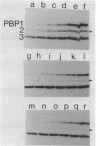Abstract
Isolates of Neisseria lactamica that have increased resistance to penicillin have emerged in recent years. Resistance to penicillin was shown to be due to the production of altered forms of penicillin-binding protein 2 (PBP 2) that have reduced affinity for the antibiotic. The sequences of the PBP 2 genes (penA) from two penicillin-resistant isolates were almost identical (less than or equal to 1% sequence divergence) to that of a penicillin-susceptible isolate, except in a 175-bp region where the resistant and susceptible isolates differed by 27%. The nucleotide sequences of these divergent regions were identical (or almost identical) to the sequence of the corresponding region of the penA gene of N. flavescens NCTC 8263. Altered forms of PBP 2 with decreased affinity for penicillin in the two penicillin-resistant isolates of N. lactamica appear, therefore, to have arisen by the replacement of part of the N. lactamica penA gene with the corresponding region from the penA gene of N. flavescens.
Full text
PDF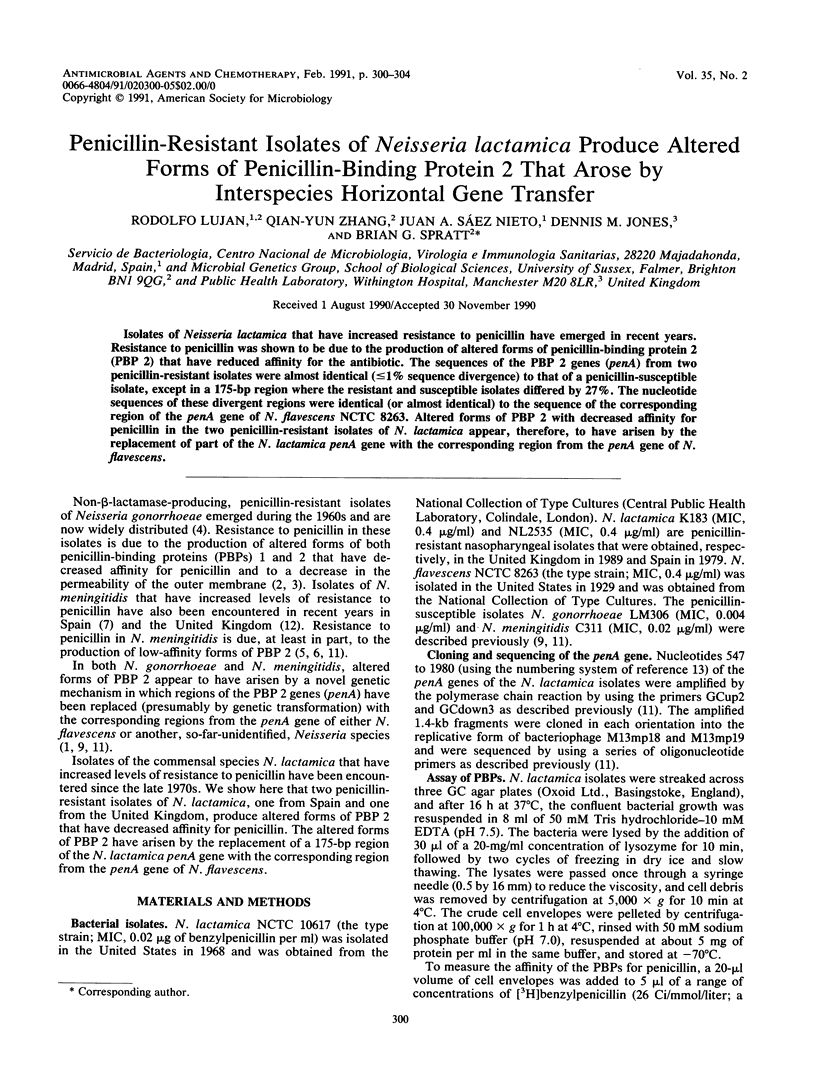
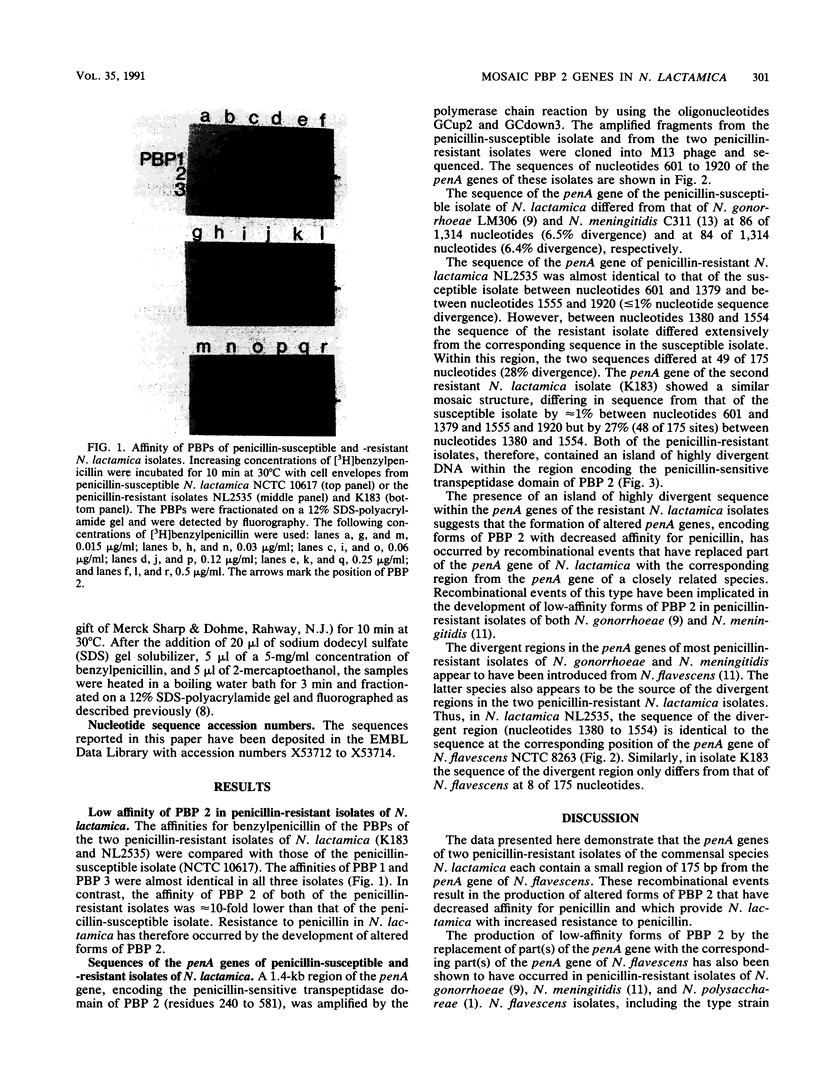
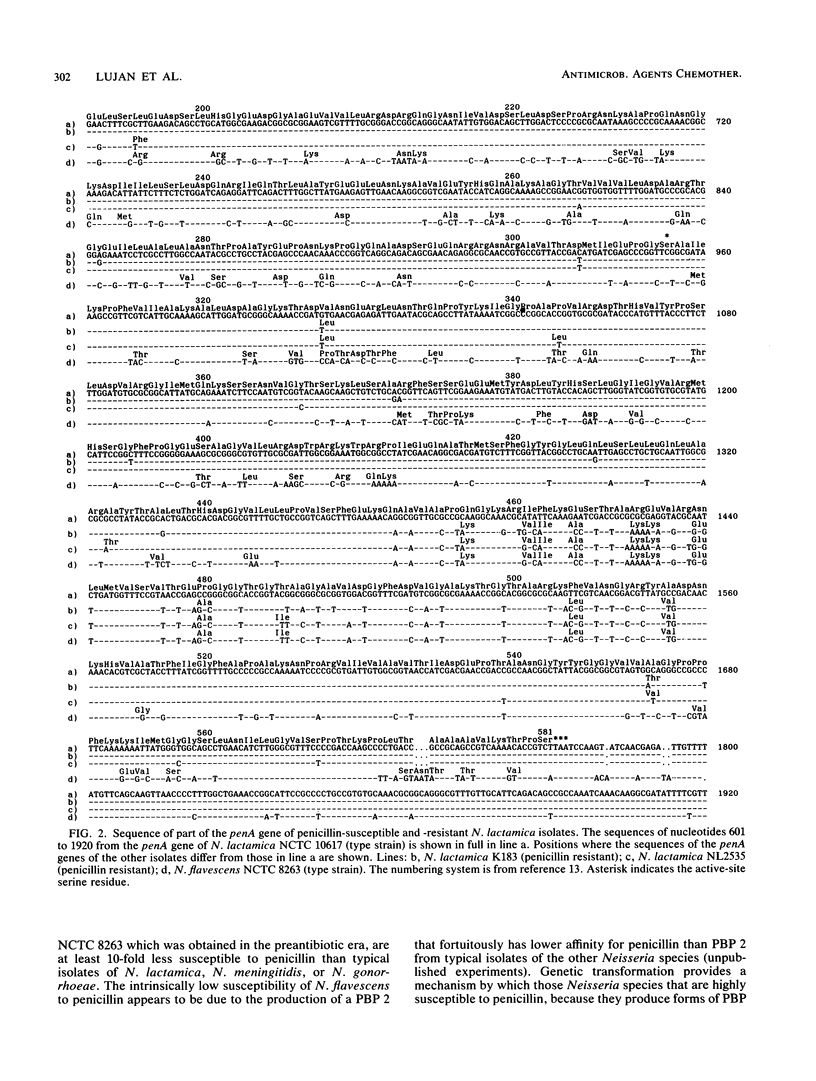
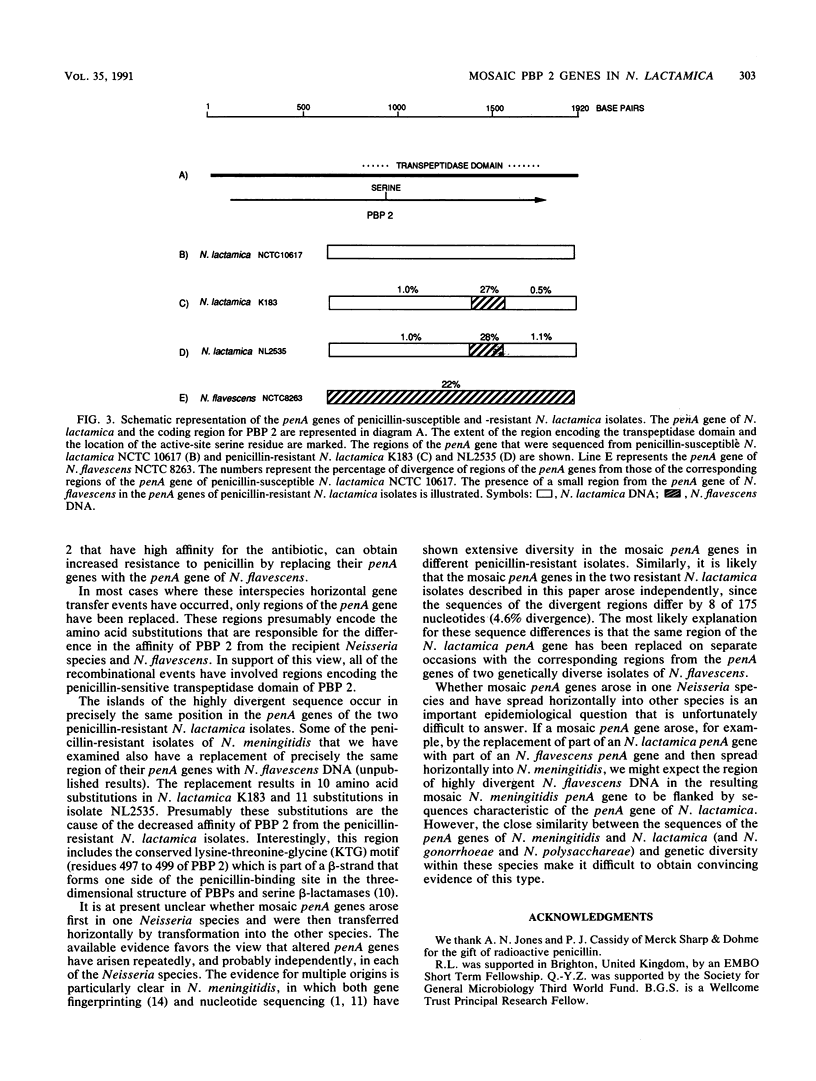
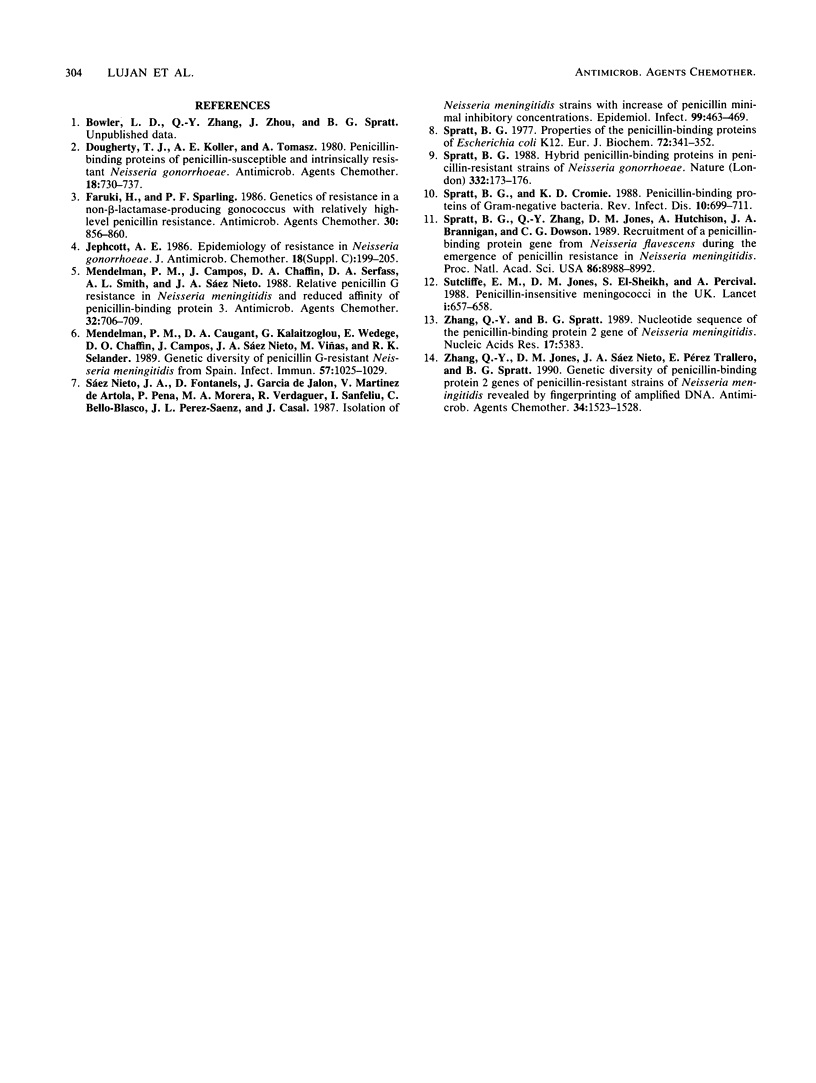
Images in this article
Selected References
These references are in PubMed. This may not be the complete list of references from this article.
- Dougherty T. J., Koller A. E., Tomasz A. Penicillin-binding proteins of penicillin-susceptible and intrinsically resistant Neisseria gonorrhoeae. Antimicrob Agents Chemother. 1980 Nov;18(5):730–737. doi: 10.1128/aac.18.5.730. [DOI] [PMC free article] [PubMed] [Google Scholar]
- Faruki H., Sparling P. F. Genetics of resistance in a non-beta-lactamase-producing gonococcus with relatively high-level penicillin resistance. Antimicrob Agents Chemother. 1986 Dec;30(6):856–860. doi: 10.1128/aac.30.6.856. [DOI] [PMC free article] [PubMed] [Google Scholar]
- Jephcott A. E. Epidemiology of resistance in Neisseria gonorrhoeae. J Antimicrob Chemother. 1986 Oct;18 (Suppl 100):199–205. doi: 10.1093/jac/18.supplement_c.199. [DOI] [PubMed] [Google Scholar]
- Mendelman P. M., Campos J., Chaffin D. O., Serfass D. A., Smith A. L., Sáez-Nieto J. A. Relative penicillin G resistance in Neisseria meningitidis and reduced affinity of penicillin-binding protein 3. Antimicrob Agents Chemother. 1988 May;32(5):706–709. doi: 10.1128/aac.32.5.706. [DOI] [PMC free article] [PubMed] [Google Scholar]
- Mendelman P. M., Caugant D. A., Kalaitzoglou G., Wedege E., Chaffin D. O., Campos J., Saez-Nieto J. A., Viñas M., Selander R. K. Genetic diversity of penicillin G-resistant Neisseria meningitidis from Spain. Infect Immun. 1989 Apr;57(4):1025–1029. doi: 10.1128/iai.57.4.1025-1029.1989. [DOI] [PMC free article] [PubMed] [Google Scholar]
- Spratt B. G., Cromie K. D. Penicillin-binding proteins of gram-negative bacteria. Rev Infect Dis. 1988 Jul-Aug;10(4):699–711. doi: 10.1093/clinids/10.4.699. [DOI] [PubMed] [Google Scholar]
- Spratt B. G. Hybrid penicillin-binding proteins in penicillin-resistant strains of Neisseria gonorrhoeae. Nature. 1988 Mar 10;332(6160):173–176. doi: 10.1038/332173a0. [DOI] [PubMed] [Google Scholar]
- Spratt B. G. Properties of the penicillin-binding proteins of Escherichia coli K12,. Eur J Biochem. 1977 Jan;72(2):341–352. doi: 10.1111/j.1432-1033.1977.tb11258.x. [DOI] [PubMed] [Google Scholar]
- Spratt B. G., Zhang Q. Y., Jones D. M., Hutchison A., Brannigan J. A., Dowson C. G. Recruitment of a penicillin-binding protein gene from Neisseria flavescens during the emergence of penicillin resistance in Neisseria meningitidis. Proc Natl Acad Sci U S A. 1989 Nov;86(22):8988–8992. doi: 10.1073/pnas.86.22.8988. [DOI] [PMC free article] [PubMed] [Google Scholar]
- Sutcliffe E. M., Jones D. M., el-Sheikh S., Percival A. Penicillin-insensitive meningococci in the UK. Lancet. 1988 Mar 19;1(8586):657–658. doi: 10.1016/s0140-6736(88)91469-9. [DOI] [PubMed] [Google Scholar]
- Sáez-Nieto J. A., Fontanals D., Garcia de Jalon J., Martinez de Artola V., Peña P., Morera M. A., Verdaguer R., Sanfeliu I., Belio-Blasco C., Perez-Saenz J. L. Isolation of Neisseria meningitidis strains with increase of penicillin minimal inhibitory concentrations. Epidemiol Infect. 1987 Oct;99(2):463–469. doi: 10.1017/s0950268800067960. [DOI] [PMC free article] [PubMed] [Google Scholar]
- Zhang Q. Y., Jones D. M., Sáez Nieto J. A., Pérez Trallero E., Spratt B. G. Genetic diversity of penicillin-binding protein 2 genes of penicillin-resistant strains of Neisseria meningitidis revealed by fingerprinting of amplified DNA. Antimicrob Agents Chemother. 1990 Aug;34(8):1523–1528. doi: 10.1128/aac.34.8.1523. [DOI] [PMC free article] [PubMed] [Google Scholar]
- Zhang Q. Y., Spratt B. G. Nucleotide sequence of the penicillin-binding protein 2 gene of Neisseria meningitidis. Nucleic Acids Res. 1989 Jul 11;17(13):5383–5383. doi: 10.1093/nar/17.13.5383. [DOI] [PMC free article] [PubMed] [Google Scholar]



